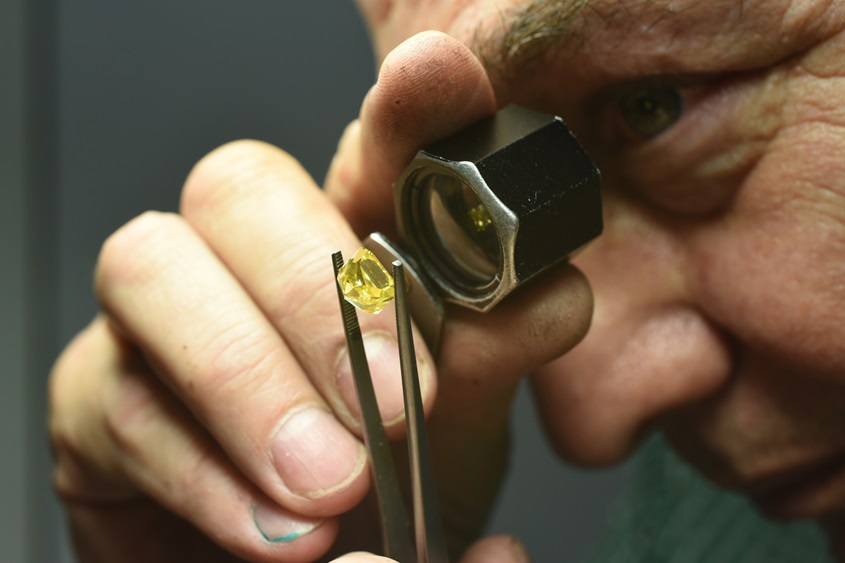This form of cutting was developed to accommodate elongated, rough diamonds whose ends are uneven. While one end is wide and the other end is narrower, its appearance is sharpened and pointed like a stake.
Unlike other elongated diamonds, the baguette diamonds, which are rectangular in shape, are partially cut by sawing elongated crystals.
Rough diamonds that are appropriate for taper cutting usually undergo cutting along the length of the lattice. The result is a number of slices of elongated diamonds similar looking to a stake. Taper cutting is similar to the cutting used with baguette diamonds.
Given the development of the cutting industry in the 1960s and 70s, taper cuting began to gain more traction. At the same time, this allowed manufacturers to create new jewelry-setting techniques by crafting special shapes and designs. Demand for taper cutting has increased worldwide, particularly in the Far East.
In the 70s and 80s, Israel was the world center for taper cutting, attracting many workers who specialize in this area. Some cutters even underwent training and learned the craft.
The training was relatively short. The fact that taper cutting does not require the same level of precision as do baguette diamonds and carre or square cuts, and the fact that there are less facets to deal with then with round stones, enabled cutters to cut a large number of diamonds. During that time, taper cutters could make attractive salaries.
But in the 1990s, the taper cutters and the cutting of small diamonds migrated to diamond centers that offered low salaries. The number of taper cutters dwindled, and many of the factories and companies that deal with taper cutting closed up shop.
Courtesy of Talking Diamonds: A Lexicon of Diamond World Technology by Shalom Lissitzky













